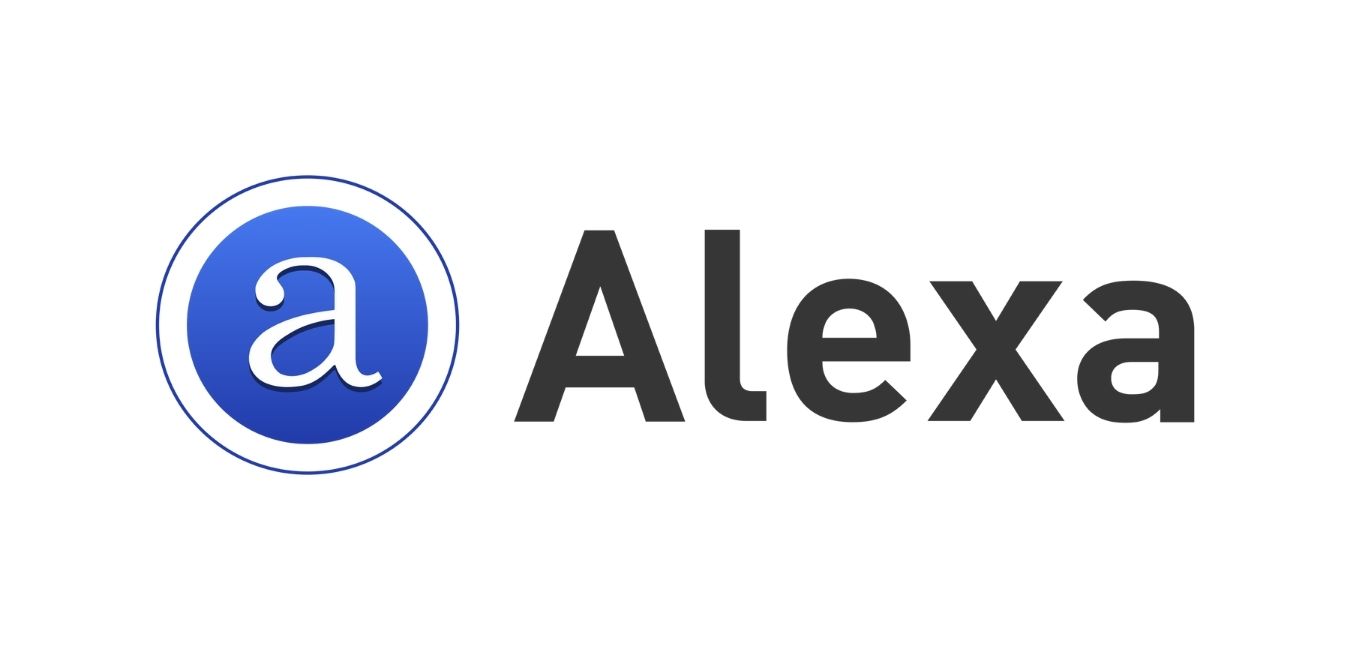American web traffic analysis company, Alexa Internet, Inc. has announced that the company is set to retire. Alexa.com will stop working starting from May 1, 2022.
TheVibely sighted this announcement on the official website of the popular traffic tracker company on December 8, 2021.
For now, the main reason behind the company’s decision to end its service with its millions of users across the world after 25 years since it was founded is not known yet.
It reads:
Twenty-five years ago, we founded Alexa Internet. After two decades of helping you find, reach, and convert your digital audience, we’ve made the difficult decision to retire Alexa.com on May 1, 2022. Thank you for making us your go-to resource for content research, competitive analysis, keyword research, and so much more.
We have been proud to serve you as customers.
Thank you sincerely,
The Alexa.com Team
Aside from the website which will be shut down from May 2022, its users should also note the following announcements;
- Alexa.com has stopped offering new subscriptions on December 8, 2021, UTC. Customers with existing subscriptions will continue to have access to their subscriptions until May 1, 2022, UTC.
- Existing subscriptions will remain active until May 1, 2022, UTC. After that, customers will no longer have access to Alexa.com.
- The last subscription billing date will be prior to April 1, 2022, UTC. Customers will continue to have access to Alexa.com until May 1, 2022, UTC.
- The APIs will be retired on December 8, 2022.
- Alexa.com offers several data exports.
- One can delete his or her Alexa.com account.
Below are some history and facts about Alexa.com that you need to know…
1. What is Alexa.com?
Alexa Internet, Inc. is an American web traffic analysis company based in San Francisco. It is a wholly-owned subsidiary of Amazon. Alexa rank is a global ranking system that uses web traffic data to list the most popular websites.
It ranks literally millions of websites in order of popularity, with the lower your Alexa rank, the more popular your site is (according to Alexa at least). It also looks at how a website is doing relative to other sites, making it a useful benchmarking KPI or for competitive analysis.
Alexa provides web traffic data, global rankings, and other information on over 30 million websites. Alexa estimates website traffic based on a sample of millions of Internet users using browser extensions, as well as from sites that have chosen to install an Alexa script. As of 2020, its website is visited by over 400 million people every month. Occasional disputes over its claims occur, but it is overall very

2. Who founded Alexa.com?
Alexa Internet was founded in April 1996 by Brewster Kahle and Bruce Gilliat. The company’s name was chosen in homage to the Library of Alexandria of Ptolemaic Egypt, drawing a parallel between the largest repository of knowledge in the ancient world and the potential of the Internet to become a similar store of knowledge. Alexa initially offered a toolbar that gave Internet users suggestions on where to go next, based on the traffic patterns of its user community. The company also offered context for each site visited: to whom it was registered, how many pages it had, how many other sites pointed to it, and how frequently it was updated.
3. Who now owns Alexa.com?
Alexa is owned by Amazon. When Alexa’s operations grew to include archiving of web pages as they are “crawled” and examined by an automated computer program (nicknamed a “bot” or “web crawler”). This database served as the basis for the creation of the Internet Archive accessible through the Wayback Machine.
In 1998, the company donated a copy of the archive, two terabytes in size, to the Library of Congress. Alexa continues to supply the Internet Archive with Web crawls. In 1999, as the company moved away from its original vision of providing an “intelligent” search engine, Alexa was acquired by Amazon.com for approximately US$250 million in Amazon stock.
4. Alexa Rank partnered with Google from 2000 – 2009
Alexa began a partnership with Google in early 2002 and with the web directory DMOZ in January 2003. In December 2005, Alexa opened its extensive search index and Web-crawling facilities to third-party programs through a comprehensive set of Web services and APIs. These could be used, for instance, to construct vertical search engines that could run on Alexa’s servers or elsewhere. In May 2006, Google was replaced with Windows Live Search as a provider of search results.
In December 2006, Amazon released Alexa Image Search. Built in-house, it was the first major application built on the company’s Web platform. In May 2007, Alexa changed their API to limit comparisons to three websites, reduce the size of embedded graphs in Flash, and add mandatory embedded BritePic advertisements.
In April 2007, the company filed a lawsuit, Alexa v. Hornbaker, to stop trademark infringement by the Statsaholic service. In the lawsuit, Alexa alleged that Ron Hornbaker was stealing traffic graphs for profit and that the primary purpose of his site was to display graphs that were generated by Alexa’s servers. Hornbaker removed the term Alexa from his service name on March 19, 2007.
On November 27, 2008, Amazon announced that Alexa Web Search was no longer accepting new customers and that the service would be deprecated or discontinued for existing customers on January 26, 2009. Thereafter, Alexa became a purely analytics-focused company.
On March 31, 2009, Alexa revealed a major website redesign. The redesigned site provided new web traffic metrics—including average page views per individual user, bounce rate (the rate of users who come to and then leave a webpage), and user time on the website.[16] In the following weeks, Alexa added more features, including visitor demographics, clickstream, and web search traffic statistics.
5. How Does Alexa Rank Work?
Alexa rank is calculated by combining a site’s estimated traffic as well as visitor engagement over the previous three months. Traffic and engagement are estimated from data provided by its toolbar. This monitors a user’s browsing behavior which acts as a sample of all Internet users.
If you want to contribute data to the rank, to get started you just need to download and install the Alexa toolbar:

This will display the Alexa Rank of the visited website. It will also send traffic data to a central server, recording your IP address and the URL you are visiting.
6. How Is Alexa Rank Calculated?
So we’ve briefly touched on this but let’s look at it in a bit more detail.
According to Alexa’s official website, the rank is calculated using a combination of estimated average daily unique visitors to the site and the estimated number of page views on the site over the past 3 months.
Data for their ranking system is based on traffic provided by their “global data panel”. This data is gathered from internet users who use one of the browser extensions available for Google Chrome, Firefox, Internet Explorer, etc.
The Alexa ranking algorithm audits a site and calculates the frequency of visits. If the same user visits a website more than once on the same day, it is counted as a single visit.
The parameters used for measuring a site’s individual ranking is based on two items:
- Unique daily visitors: the traffic/number of Alexa users visiting a site in a day.
- Average pageviews: number of times a particular page or URL is viewed by Alexa users.
From here, the site with the highest combination of unique visitors and pageviews is ranked Number 1.
(Pssst, if you are curious, the number 1 site begins with G and rhymes with google.)
The algorithm also looks for any potential biases and amends its rankings in order to compensate for the visitors who are not included in Alexa’s measurement panel.
It has also been said that Alexa sources third-party data to give a broader view of internet users.
7. Is Alexa Ranking Accurate?
Although Alexa rank can be a good way to compare one website’s performance against another’s, Alexa’s statistics are not necessarily the most accurate
In fact, people have compared Alexa vs Google Analytics, coming to the conclusion that Alexa is not as accurate. Some sites that receive much higher page views actually have a lower Alexa rank (GA: 153,177 & Alexa: 346,890 vs GA 3,852 & Alexa: 194,636). Remember, the lower the better.

This is probably because Google has much wider coverage than Alexa, as not everyone will have the Alexa toolbar installed to track.
Because of this lower coverage, treat Alexa rank as an overview for comparison purposes and not an absolutely accurate overview of a website.
8. Can Alexa Rank Be Manipulated?
According to Search Engine Journal, you can manipulate your website’s Alexa rank. By creating a JavaScript function to open an array of page addresses from your website, you can artificially increase your Alexa rank. The goal is to get each address to open in a separate window, thus increasing page views.
Of course, this is not recommended as it is horrible for UX. How many times have you been annoyed by one of those sites that makes you click through to multiple pages to read just one article?
It’s annoying. Don’t be that person.
However, the better and recommended way of improving it is to write good and regular content to get the right traffic to your site. You know, SEO 101.
Artificially boosting your Alexa rank is only a short-term tactic. And like a lot of quick fixes, it won’t last in the long run.
9. How Do I See My Site’s Alexa Rank?
Checking your website’s Alexa rank is pretty simple. Just head over to Alexa’s official rank checker, put the URL of the site you want to check, and hit find:

From here, you can do another search or view the site’s stats:

If you want to check multiple ranks (up to 5 URLs at a time), you can use this bulk rank checker. Again, just drop in your URLs and search:

10. Alexa Traffic Rank
A key metric published from Alexa Internet analytics is the Alexa Traffic Rank, also simply known as Alexa Rank. It is also referred to as Global Rank by Alexa Internet and is designed to be an estimate of a website’s popularity. As of May 2018, Alexa Internet’s tooltip for Global Rank says the rank is calculated from a combination of daily visitors and pageviews on a website over a 3-month period.
The Alexa Traffic Rank can be used to monitor the popularity trend of a website and compare the popularity of different websites.
The traffic rank used to be determined from data recollected from users that had the Alexa toolbar installed on their browser. As of 2020, Alexa does not use a toolbar; instead, it uses data from users that have installed any of a number of browser extensions and from websites that have the Alexa script installed on their webpages.
11. Alexa Rank Tracking Toolbar
Alexa used to rank sites based primarily on tracking a sample set of Internet traffic—users of its toolbar for the Internet Explorer, Firefox, and Google Chrome web browsers. The Alexa Toolbar included a popup blocker (which stops unwanted ads), a search box, links to Amazon.com and the Alexa homepage, and the Alexa ranking of the website that the user is visiting. It also allowed the user to rate the website and view links to external, relevant websites.
In early 2005, Alexa stated that there had been 10 million downloads of the toolbar, though the company did not provide statistics about active usage. Originally, web pages were only ranked amongst users who had the Alexa Toolbar installed, and could be biased if a specific audience subgroup was reluctant to take part in the rankings. This caused some controversies over how representative Alexa’s user base was of typical Internet behavior, especially for less-visited sites. In 2007, Michael Arrington provided examples of Alexa rankings known to contradict data from the comScore web analytics service, including ranking YouTube ahead of Google.
Until 2007, a third-party-supplied plugin for the Firefox browser served as the only option for Firefox users after Amazon abandoned its A9 toolbar. On July 16, 2007, Alexa released an official toolbar for Firefox called Sparky. On 16 April 2008, many users reported drastic shifts in their Alexa rankings. Alexa confirmed this later in the day with an announcement that they had released an updated ranking system, claiming that they would now take into account more sources of data “beyond Alexa Toolbar users”.
12. How does Alexa Rank Browser extensions work?
Alexa replaced their toolbar with browser extensions. As of 2021, these extensions are available for Google Chrome and Firefox browsers. The Alexa browser extension displays the Alexa Traffic Rank for websites, shows related websites, provides search analytics, and quickly allows users to view the Internet Archive through the Wayback Machine.
13. What is Certified statistics on Alexa Rank?
Using the Alexa Pro service, website owners can sign up for “certified statistics”, which allows Alexa more access to a website’s traffic data. Site owners input JavaScript code on each page of their website that, if permitted by the user’s security and privacy settings, runs and sends traffic data to Alexa, allowing Alexa to display—or not display, depending on the owner’s preference—more accurate statistics such as total page views and unique page views.
14. Privacy assessments
As of July 2020, Alexa has detailed their privacy notice as part of their Website Terms of Use and End User License Agreement.
15. What Are the Pros vs Cons of Alexa Rank?
So we’ve looked at what it is, its accuracy, and how to see it, but what are the pros and cons of Alexa rank? Let’s take a closer look:
Pros
Here are a few ways in which Alexa rank is helpful:
- If your site makes money through advertising, a high Alexa rank may allow you to charge more for advertising space.
- You can get a quick traffic estimate of your competitors’ websites which you can then compare against your own.
- Potential to attract higher quality guest writers wanting to contribute articles to higher ranked sites.
- Insights into the performance of your website, which could be useful for helping with your other SEO/marketing.
Cons
Here are a few ways in which Alexa rank is not helpful:
- Data is limited to only users who have the toolbar installed. So there will be lots of sites which get a low rank despite having high traffic.
- It can be easily manipulated (as we’ve mentioned), further making the rankings unreliable.
- Subdomains and subpages are not ranked separately, only the top-level domain. So there may be some inaccuracies here.
Overall, Alexa rankings have their pros and cons, but there is still enough incentive for you to keep track of it (and improve it).
16. How to Improve Your Alexa Rank (5 Quick Tips)
As already mentioned, you can improve your website’s Alexa rank without manipulating it. But what is the fastest way?
Here are some useful tips:
#1 Optimize Your Metadata
Just like SEO best practices, you want to add metadata (page titles + meta descriptions) to your site so that Alexa (and Google) knows what your site is about.

#2 Write Content People Want to Read
Attracting people to your website with high-quality content is great for numerous reasons: it improves SEO, it gets people to your site and allows you to rank for revenue-driving keywords. It also increases your chances of people with the Alexa toolbar visiting, resulting in a higher rank.
After all, 70% of internet users want to learn about products via content:

#3 Update Your Site Regularly
Keep your site updated with fresh content (that people want to read). Whether you are a blogger, developer, or small business owner, it’s important to improve engagement by producing useful content regularly.

#4 Share Your Content on Social Media
Writing content for your site is all well and good, but you also want to promote it on relevant social media channels. Ideally, you want to target the platforms where your target audience hangs out. With 3.2 billion daily social media users, you don’t want to miss out on getting those eyeballs on your site.

#5 Increase Web Traffic
Now, this is going to be potentially the hardest one. Increasing your traffic isn’t going to happen overnight. It takes consistent effort creating content (+ don’t forget about getting in featured snippets), maintaining a healthy website, and getting high-quality backlinks to your site.
Oh, and just make sure your hosting can handle any increases in traffic.

17. What Are the 10 Most Popular Websites? (As Ranked by Alexa)
Before we cap off this article, if you are interested, Alexa keeps a list of the top sites on the web, along with data points like average daily time on site, average daily pageviews per visitor, average % traffic from search, and average total sites linking to the site.
Here are the top 10 Alexa ranked sites:
- Google.com
- Youtube.com
- Tmall.com
- Qq.com
- Baidu.com
- Sohu.com
- Facebook.com
- Taobao.com
- 360.cn
- Jd.com
18. Top 10 Alternatives to Alexa Marketing Stack
- Semrush.
- Moz Pro.
- Ahrefs.
- Similarweb.
- SpyFu.
- SE Ranking.
- BrightEdge.
- Serpstat.
- Conductor
- Act-On
Summary
It’s fair to say that Alexa rank can be a useful piece of data for website comparison. Just don’t base too much of your marketing work around it as it is not as accurate as something like Google Analytics.
Think of it as a complementary tool to strengthen your SEO strategy. Just remember:
The lower the Alexa rank, the better (estimated) traffic is.
Save time, costs and maximize site performance with:
- Instant help from WordPress hosting experts, 24/7.
- Cloudflare Enterprise integration.
- Global audience reach with 29 data centers worldwide.
- Optimization with our built-in Application Performance Monitoring.







